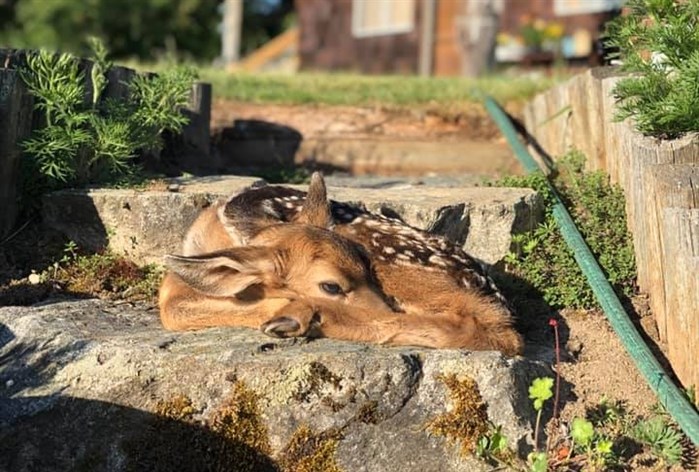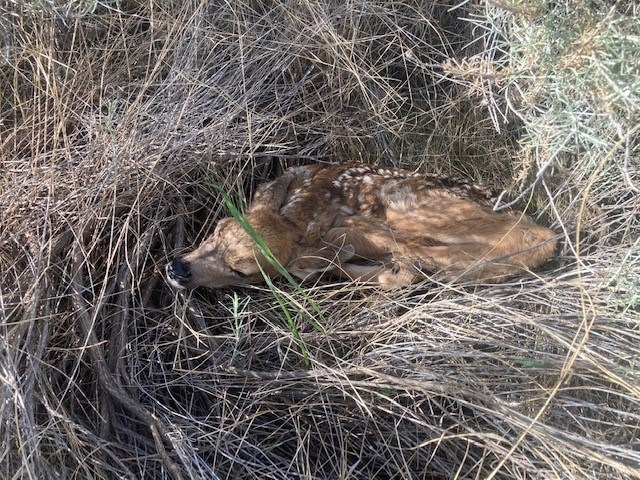
A fawn spotted in Andrea Howson's garden, May 29, 2021 in Lake Country.
Image Credit: SUBMITTED/Andrea Howson
June 08, 2021 - 9:00 AM
A Conservation Officer is asking Kelowna residents to avoid moving resting fawns because they can become orphaned if moved.
Ken Owens said a fawn was found on the sidewalk in the Royal View Drive area in the city yesterday, June 1.
"Unfortunately, we had people picking up the fawn, placing water out for the fawn and with an eye dropper putting water on the fawn’s lips... The fawn is now in a safe place for its mother to return," he said via email.
In the Central Okanagan last year, Conservation Officers dealt with several individuals who were charged after taking possession of live fawns. The fawns were not orphaned or injured but fawn-napped, Owens said in a news release.
"Every year, well-meaning people doom deer fawns to an unnatural life in confinement or kill them accidentally by rescuing them. This is especially a problem in Kelowna, where lots of people and deer coexist. That means that doe deer and fawns must also contend with cars, roads, fences and dogs. Sometimes fawns get separated by roads or a fence or chased by dogs, and it takes a while to get back together with their mother," he said.
Taking a fawn into human care is against the law and residents can be fined $345 for unlawful possession of live wildlife. Pet owners are asked to be responsible and keep their dog on a leash, or in a fenced area when owners are not at home.
Conservation Officers are reminding people that the best thing they can do to ensure a fawn’s survival is to leave the newborn deer fawns alone and leash up their dogs while out walking.
Mother deer, elk and other species may leave their young alone for long periods. ] To avoid attracting predators, a mother may only return a few times a day to nurse and when she does return, she can be expected to defend her baby from real or perceived threats — including nearby humans and their pets, Owens said.

A fawn found in the Royal View Drive of Kelowna, June 1, 2021.
Image Credit: SUBMITTED/Ken Owens
It's a typical time of year for young babies to lie in vegetation for hours at a time, especially in the first two weeks of their lives when they’re not strong enough to follow their mothers, Owens said. Fawns are as small as a cat when born, and their camouflage and lack of scent keep them hidden from predators.
Although these babies may look abandoned, they are not, he said.
— This story was originally published at 11 a.m. June 5, 2021.
To contact a reporter for this story, email Carli Berry or call 250-864-7494 or email the editor. You can also submit photos, videos or news tips to the newsroom and be entered to win a monthly prize draw.
We welcome your comments and opinions on our stories but play nice. We won't censor or delete comments unless they contain off-topic statements or links, unnecessary vulgarity, false facts, spam or obviously fake profiles. If you have any concerns about what you see in comments, email the editor in the link above.
News from © iNFOnews, 2021